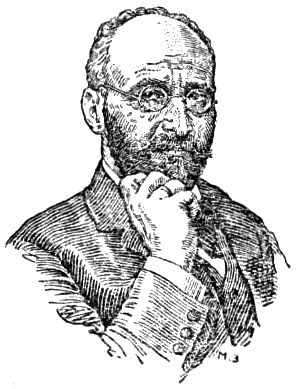Liberty Matters
Capital’s Radical Heterogeneity and the Widespread Aversion to a Capital-Based Macroeconomics

Eugen von Bohm-Bawerk, following Menger’s Principles of Economics (1871), dealt head-on with the issues of capital theory. Subsequent Austrian economists, particularly Mises, Hayek, Lachmann and Rothbard embraced, in large part, Bohm-Bawerk’s theorizing and used it as the basis for their macroeconomics and, particularly, in their theorizing about business cycles. “Capital-based macroeconomics” has come to be virtually synonymous with “Austrian Macroeconomics.”
By comparison, competing schools of thought (1) have allowed capital to have only a shadowy existence (Keynes), (2) have conceived capital strictly in terms of stocks of it and flows from it (John B. Clark and Frank Knight), or (3) have modeled capital as “dated labor,” that is, labor expended, e.g., so many months before the emergence of the final product (Cambridge capital theorists). These and related modes of theorizing all seem to be awkward constructions designed to avoid the so-called “thorny issues of capital theory.” I can remember Lachmann once remarking that Cambridge’s dated-labor theorizing amounts to “capital theory without capital”! More significantly, Keynes, in his summing-up article of 1937[104] can readily be seen as congratulating himself for separating capital theory from macroeconomics ‒ and thus setting the stage for pro-active, central-direction of the macroeconomy.
The aversion to dealing head-on with capital theory derives from capital’s radical heterogeneity, which Peter Lewin highlighted in his most recent post. Of course, the other classically defined factors of production (land and labor) are also heterogeneous. I like to emphasize the dimensional heterogeneity of capital, which is the point in Lachmann’s itemizing beer barrels and blast furnaces, etc. We can quantify labor in terms of “worker-hours of labor,” recognizing that some worker-hours are more productive than others, and we can quantify land in terms of acres, recognizing that some acres are more fertile or more useful than others. But theorizing about ______ of capital poses a problem. How do we fill in the blank? Pounds or cubic feet won’t do. “Dollars’ worth” won’t do either; that measure conflates the quantity of capital with its price. I became sensitized to this units problem while in graduate school. I listened to professors lecturing about “doses,” “chunks,” and/or “units” of capital. “Doses” and “chunks” are big red flags here, and, of course, “unit” is itself not a unit. The floundering for a credible unit and the ultimate failure to find one demonstrates capital’s dimensional heterogeneity.
The Austrian approach doesn’t entail quantifying the amount of capital but rather focuses on the internal integrity of capital’s temporal structure and on the structure’s overall compatibility with the time preferences and saving behavior of market participants. The fundamental idea is that if interest rates, broadly conceived, are allowed to be determined by unhampered market mechanisms, the temporal structure of capital will tend to be consistent with consumers’ (and savers’) preferred temporal pattern of consumption. And conversely, if interest rates are manipulated by a central monetary authority, the temporal structure will develop internal inconsistencies, will be at odds with the preferred temporal pattern, and will give rise to booms and busts.
Endnotes
[104.] Keynes, John Maynard, “The General Theory of Unemployment,” Quarterly Journal of Economics, vol. 51, pp. 209-23.
Copyright and Fair Use Statement
“Liberty Matters” is the copyright of Liberty Fund, Inc. This material is put on line to further the educational goals of Liberty Fund, Inc. These essays and responses may be quoted and otherwise used under “fair use” provisions for educational and academic purposes. To reprint these essays in course booklets requires the prior permission of Liberty Fund, Inc. Please contact oll@libertyfund.org if you have any questions.